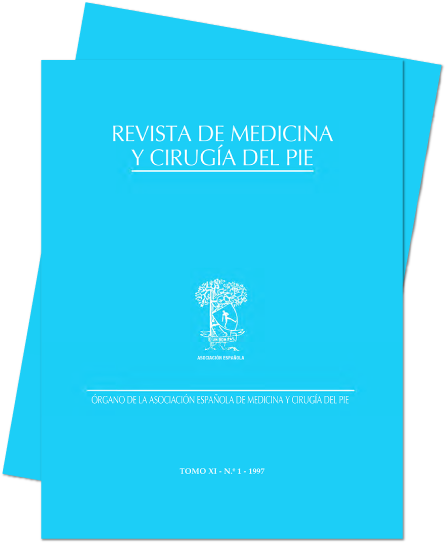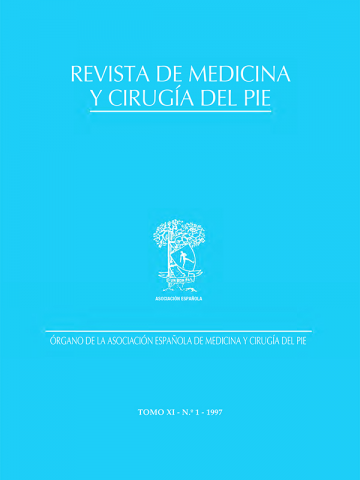Resumen:
La Bipedestación y la Postura Erecta han condicionado un cambio adaptativo global de nuestra anatomía, siendo de especial importancia las modificaciones surgidas en el pie.
En este trabajo se analizan someramente los cambios cualitativos más importantes para la evolución de un pie de tipo humano.
En primer lugar se exponen fenómenos como el Seriado Fractral hasta la consecución del Quiridio Pentadáctilo durante la aparición de los Anfibios Primitivos; la posterior recolocación de las extremidades bajo el eje del cuerpo con los Reptiles. La especial evolución de los Reptiles Mamiferoides que presentan un pie de tipo moderno mediante el progresivo acortamiento de las falanges, la presencia de una fórmula digital moderna (2:3:3:3:3), la superposición del talus y el calcáneo y la divergencia del hallux.
En segundo lugar se analiza el Pie Primate que evoluciona desde un pie prensil hasta un pie de carga, remarcando la importancia de la locomoción. Quedan expuestas diferentes modificaciones podales a tenor de la línea filogenética que pasando por primates arcáicos, prosimios, anthropoides, póngidos, hominoides, homínidos llega hasta Homo. Diversas teorías sobre la adquisición de la bipedestación son expuestas.
Finalmente se describen los principales cambios que mediante la Anatomía Comparada pueden observarse entre los pies primate y humanos en huesos como el talus, calcáneo, articulación subastragalina, tarso medio, antepie y bóveda plantar.
Abstract:
Fully bipedal gait and the Erect posture have been very important in the evolution of Man. The Foot is one of the anatomical areas where the morphological adaptations have been most significatives.
This study is divided in three different sections:
The first section analyses the phenomena that give rise to the modern foot like Fractral Seriation followed by the Pentadactyl Quiridius during the first steps of the Primitive Anphibians; afterward, with the rise of the ground reptiles, hindlimbs modified their situation from the a sprawling - semiflextioned extremity to a new columnar position. Coetaneous with Dinosaurs, the branch of the Mammalian-Reptiles evolution leads to the true modern foot with a progressive shortening of the phalanges, changing to a mammal's digital formula (2:3:3:3:3), displacement of the calcaneous below the talus and different degree of hallux divergence.
The second part analysed the evolving primate foot that leads from a grasping to a loading foot, with the special emphasis in the locomotor patterns. Foot changes based upon phylogenetic evolution are described in the Archaic Primates, Prosimians, Anthropoids, Hominoids, Hominids and the Homo. In this section an overview of the several theories that try to explain bipedal adcquision is carried out.
Finally in the thrid section the most representatives adaptations in the foot bones and/or areas like talus, calcaneous, midtarsal, forefoot and foot-vault are described.





